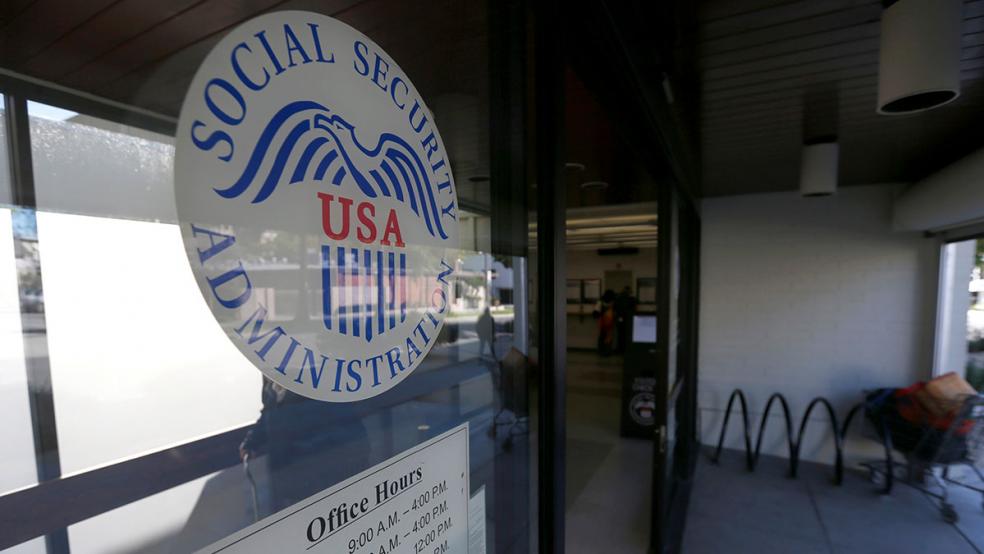As America ages, retirees on Social Security face steep automatic cuts starting in 2033 while the trust fund for Medicare’s hospital coverage is on pace to be exhausted by 2031, according to annual reports by the programs’ trustees released on Friday.
Social Security’s old age and survivors insurance trust fund is now projected to run out one year sooner than projected as of last year, with ongoing income sufficient to pay only 77% of benefits in 10 years’ time. If the programs’ retirement and disability trust funds were combined, they would be unable to pay full benefits as of 2034, one year earlier than projected last year. After that, benefits would face a 20% cut unless Congress acted to close the gap.
The worsening outlook is the result of weaker economic projections, with expectations for gross domestic product and labor productivity lowered by about 3% compared to last year’s forecast.
Medicare’s hospital trust fund, meanwhile, is expected to be able to pay 100% of scheduled benefits for three more years than projected last year. Once the Medicare trust fund is tapped out, the program will only be able to pay 89% of benefits.
The slight improvement in the outlook for Medicare is mostly the result of lower projected health care spending based on newer data, the report says. Spending on prescription drugs in Medicare is projected to be significantly lower as a share of the economy as a result of the Inflation Reduction Act passed by Democrats last year.
“Administration officials said the coronavirus pandemic ‘dramatically affected’ the Medicare program’s finances for a variety of reasons,” The Washington Post’s Jeff Stein and Amy Goldstein noted. Those reasons include “how much care people are getting inside hospitals, the fact that Americans are not yet seeking as many medical services as before covid and the reality that the nation’s excess deaths from covid involved many people with other ailments who had been getting expensive medical treatment that now won’t be needed.”
Why it matters: The updated projections highlight the ongoing financial troubles of the popular programs at a time when they have both been in the political spotlight. The trustees urged Congress to look at ways to close the funding shortfalls, but their reports come as both Democrats and Republican leaders have vowed to leave the popular programs untouched in discussions this year about spending cuts and the national debt limit.
“Lawmakers have many options for changes that would reduce or eliminate the long-term financing shortfalls,” the trustees said in the report. “With each year that lawmakers do not act, the public has less time to prepare for the changes.”
In his budget request this month, President Joe Biden proposed changes that the White House said would extend the solvency of Medicare’s trust fund for at least 25 years. His plan, among other provisions, would raise the Medicare payroll tax rate from 3.8% to 5% on annual income above $400,000 and close a loophole that allowed some business owners to avoid the tax. Biden also called on lawmakers to allow Medicare to negotiate the prices of more drugs and expand a newly enacted rebate requirement for drug companies.
The administration did not include a plan to extend Social Security, though — a decision meant to emphasize Biden’s commitment to not cut the program and draw a contrast with many Republicans who have in the past supported plans to cut both Social Security and Medicare, and in some cases continue to do so.
Here are some reactions to the latest report.
Doing nothing is not a good option: Budget experts and advocates warned that lawmakers can’t keep ignoring the financial challenges both Social Security and Medicare face. “Anyone who pledges not to touch Social Security is endorsing a 20 percent across-the-board cut in benefits. Refusal to fix Medicare means supporting major disruptions in health services,” said Maya MacGuineas, president of the Committee for a Responsible Federal Budget. “It’s time for our leaders to take their heads out of the sand and put them together to develop real and lasting solutions to save Social Security and Medicare.”
AARP CEO Jo Ann Jenkins offered a similar message: “Today’s Social Security and Medicare Trustees reports reinforce that while they are financially strong today, both programs face long-term funding needs, and Congress must act to find solutions to ensure Social Security and Medicare will be there for the next generation and into the future.
Social Security advocates say the programs don’t have to be cut: “The takeaway from this report is that whether to expand or cut Social Security’s modest but vital benefits is a question of values, not affordability,” said Nancy Altman, president of Social Security Works, a left-leaning think tank. “While some political elites still cling to the idea of a so-called ‘balanced’ package that includes benefit cuts, such a plan will not succeed because it is toxically unpopular among the American people.”
Altman said Congress should look to expand benefits while closing the Social Security shortfall. Her group said that the program is projected to cost about 6% of GDP some 75 years from now, far less than Germany, France and other industrialized countries spend on similar programs.
“The threat to Social Security is not the unremarkable and easily addressed projected shortfall starting in the 2030s,” the group said. “The real threat is the hostility of Republicans in Congress.”
The nation’s fiscal outlook depends on the future of these programs: As Alan Rappeport and Margot Sanger-Katz write in The New York Times, “addressing America’s fiscal problems is difficult without making changes to the social safety-net programs. The Congressional Budget Office said in February that spending growth for Medicare and Social Security is rapidly outpacing the growth in federal tax revenues over the next 10 years and that by 2033 the federal government will be spending as much on Social Security alone as it does on all discretionary spending — military and otherwise — combined.”





